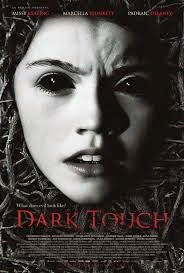Prime Real Estate
4 Stars
“Last night I dreamt I went to Manderley again.” Oh, oops. Wrong movie.
In all seriousness though, the striking (albeit superficial) similarities to Rebecca (Hitchcock 1940) really help create the creepy atmosphere of this film. Consider the dreamy internal monologue, the menacing and personified house, the terrified yet terrifying maid, the engraved journal; all work together to set a familiar tone that is crucial to what author Pam Keesey describes as “the power of suggestion”.
After watching this haunted house story, you may notice that it showed nothing. But you might not. The suspense created by the use of sound is so visceral that it hand’t really occurred to me until the very end that I hadn’t actually seen the ghost at any time. While this is a tactic Stephen King has openly discussed his disapproval for, arguing that Wise’s decision to never “open the door” is simply “playing to tie rather than to win”, I’m betting most would disagree.
Quit your bitching King, it’s a powerful method.
In fact, the film has even aged quite well, apparent in how believable the characters remain.
The protagonist, Eleanor, might be the least reconcilable with modern perceptions because of her “nervousness”, but as a character she is still intriguing. Being inside of her head allows the viewer an understanding of how complex her relationship to the outside world is, but we learn even more about her from the prodding of Theo, a confident beauty who is instantly drawn to Eleanor. Her romantic inclination towards Eleanor is immediate; when the two first meet Theo refers to her as Nell, stating “it is the affectionate nickname for Eleanor, isn’t it?” And, cue the deliciously telling smirk.
Meanwhile, Luke has a rather small role but he brings the comedic relief as he breezes about for most of the film with no concerns. All three are outcasts in their own right, and while you may not expect them to ever be in a room together, the trio has been carefully assembled by Dr. Markway. Handsome and calm, Markway eventually becomes torn between his ethics and his pursuit of truth, leading him to wonder, “maybe I’m being selfish” when he reflects upon the madness the group has been rocked by.
I haven’t seen the remake in well over a decade so I won’t pretend to remember it. All I can say, is that I think Catherine Zeta-Jones would be a perfect Theo. Overall though, it seems the film missed the memo on the power of suggestion. Keesey writes: “The remake of The Haunting and its failure to measure up to Wise’s original reminds us that, despite the rapid development of SFX technology and the untapped potential of this new resource, SFX needs to be a tool in the service of storytelling and not the story itself”.
The Haunting never needed SFX, all it needed was a story and a house. After all “It’s a Deadly Serious Place” (Dr. Markway).






























